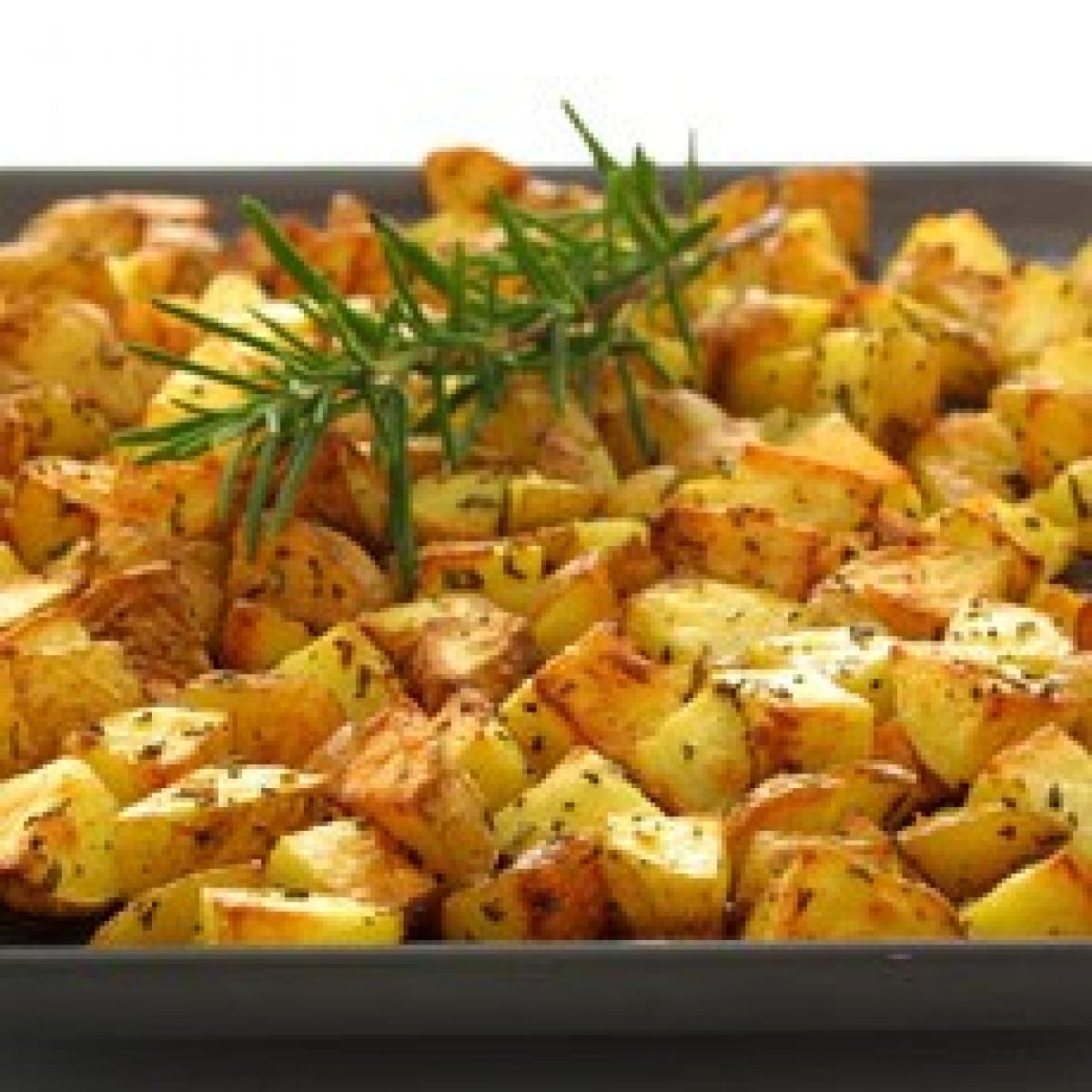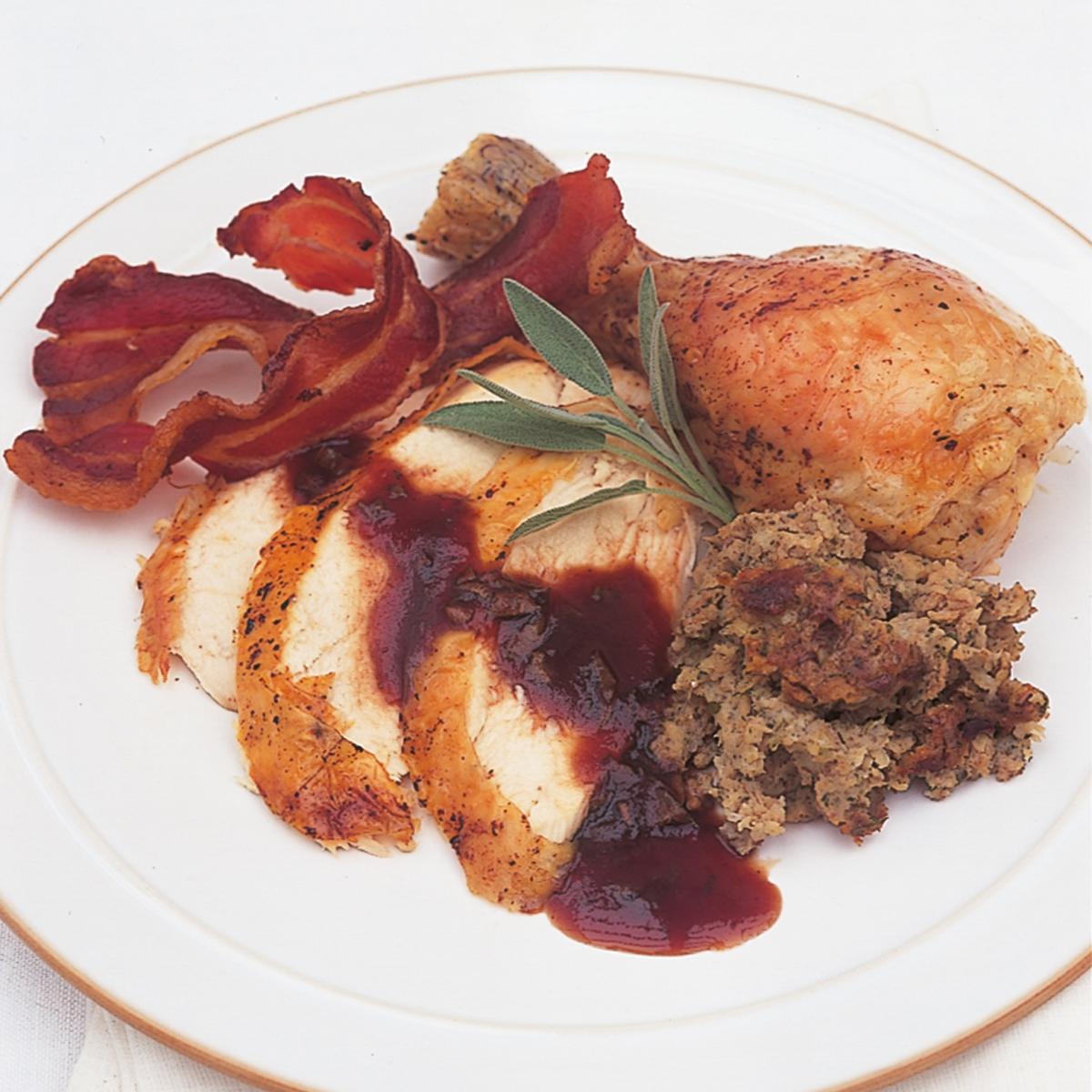You need to begin this recipe half an hour before you want to start the cooking, because the aubergines need to be salted and drained as they sometimes contain bitter juices. All you do is cut the aubergines lengthways into four and then into 1 inch (2.5 cm) chunks and place them in a colander, sprinkling them with salt as you pack them in, then place a plate on top of the aubergines and weight it down with something heavy (scale weights or tins of food).
Now take a large frying pan, heat 1 tablespoon of oil over a high heat, then as soon as it's smoking hot, brown the lamb slices two at a time for about 1 minute on each side. As they brown, transfer them to the roasting tin. Then chop the garlic and oregano quite small. Season the lamb with salt and pepper and scatter the garlic and oregano all over them, pressing it well into the crevices of the meat. Then pop the roasting tin on to the middle shelf of the oven and give them 45 minutes' initial cooking.
Meanwhile, prepare the tomatoes: place them in a bowl and pour boiling water over them from the kettle, leave them for 1 minute exactly, then drain off the water and slip the skins off. Then slice the tomatoes into ½ inch (1 cm) chunks. Now peel, halve and thinly slice the onions, then heat another tablespoon of oil in the frying pan over a medium heat and, when it's hot, lightly brown the onions, moving them around the pan and giving them about 5 minutes or so.
After that, add the tomatoes and the tomato purée, stir well, giving them about 1 minute before turning the heat off. Now dry the aubergines, either in a clean tea cloth, or in batches using kitchen paper. After that, remove the meat from the oven and transfer to a plate. Tilt the roasting tin, spoon off any excess fat, then put in half the aubergines, onion and tomatoes, mix them well with the juices in the tin and season.
Then replace the meat and scatter the rest of the aubergines and tomato mixture on top. Add a little more seasoning of salt and pepper and return the roasting tin to the oven, without covering, for about 1½ hours or until the lamb is completely tender. Have a peep halfway through the cooking time and if the vegetables on top look a little dry, baste them with some of the juices.
To make the rice pilau, in a shallow saucepan or frying pan with a lid, sweat the onion in the oil over a medium heat, then add the pine nuts, currants and white basmati rice and stir everything well. Add the cinnamon stick, then pour in 1 pint (570 ml) boiling water and add the salt, stir once, put a lid on, then let it cook for 15 minutes.Sprinkle with a little chopped flat-leaf parsley before serving.

















































